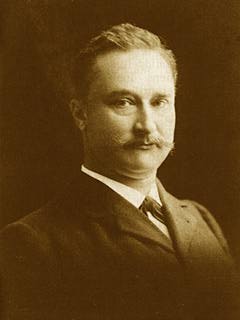Eugène Dubois facts for kids
Quick facts for kids
Marie Eugène François Thomas Dubois
|
|
|---|---|
 |
|
| Born | January 28, 1858 |
| Died | December 16, 1940 (aged 82) Haelen, Netherlands
|
| Nationality | Dutch |
| Alma mater | University of Amsterdam |
| Scientific career | |
| Fields | Paleoanthropology, Geology |
Eugène Dubois (born January 28, 1858 – died December 16, 1940) was a Dutch scientist. He studied ancient humans (paleoanthropology) and rocks (geology). He became famous around the world for finding the remains of an early human ancestor called Pithecanthropus erectus, also known as "Java Man". Today, we call this Homo erectus. While other ancient human fossils had been found before, Dubois was the first scientist to actively go looking for them on purpose.
Contents
Who Was Eugène Dubois?
Eugène Dubois grew up in a village called Eijsden in the Netherlands. His father was a pharmacist and later the mayor. From a young age, Eugène was very interested in nature. He loved exploring caves and collecting all sorts of things like plants, stones, insects, and animal skulls.
When he was about 12 or 13, he went to school in Roermond. There, he learned about Charles Darwin's new ideas on evolution from a German biologist named Carl Vogt. These ideas greatly influenced him.
How Did He Become a Scientist?
Even though his father wanted him to become a pharmacist, Eugène decided to study medicine at the University of Amsterdam in 1877. While he was a student, he also taught anatomy (the study of the body's structure) at art schools. In 1884, he finished his medical degree.
Instead of becoming a doctor, he chose to become an academic. He studied comparative anatomy, which means comparing the body structures of different animals. He was very interested in how humans evolved, especially after learning about ideas from another scientist, Ernst Haeckel, who believed there must be a "missing link" between apes and humans.
Dubois even found some ancient human skulls near his hometown while on vacation. This made him even more determined to find the "missing link."
The Search for Early Humans
Dubois believed that early humans likely came from warm, tropical places. So, in 1887, he joined the Dutch army and arranged to be sent to the Dutch East Indies (which is now Indonesia). This was a big step, and his fellow scientists were surprised. He moved there with his wife and new baby daughter, ready to search for the "missing link" in human evolution. He was very sure there was only one such link to find.
What Did He Discover?
From 1887 to 1895, Dubois explored many places, looking near rivers and in caves. He first searched on the island of Sumatra, and then moved to the island of Java.
In 1891, he made an amazing discovery! He found remains of what he called "a species in between humans and apes." He named his finds Pithecanthropus erectus, which means "ape-human that stands upright." This discovery is famously known as Java Man. Today, scientists classify these remains as Homo erectus, meaning "human that stands upright."
These were the first fossils of early human ancestors ever found outside of Africa or Europe! Dubois did his fieldwork at important sites like Sangiran and Trinil on Java.
Dubois' Later Life
After his big discovery, the University of Amsterdam gave Dubois an honorary doctorate in botany and zoology in 1897. In 1899, he became a professor of geology. He also worked as a keeper of paleontology, geology, and mineralogy at Teylers Museum until 1928. He kept the Homo erectus remains there.
In 1919, he became a member of the Royal Netherlands Academy of Arts and Sciences.
Even though more and more scientists started to agree with his findings in the 1920s and 1930s, Dubois felt a bit sad and bitter when he died in 1940. He was buried in Venlo, Netherlands.
Dubois' Lasting Impact
Eugène Dubois' work changed how we understand human evolution. His collection of fossils and scientific notes are now kept at Naturalis in Leiden, a natural history museum. The museum has a special exhibit about his Homo erectus findings, where the original Trinil 2 fossil is on display.
According to Pat Shipman, an anthropology professor, Dubois was "an extremely influential person in founding paleo-anthropology." He didn't just find fossils; he studied them in new ways. He helped move the study of human fossils from just identifying different races to understanding human evolution. This was a huge change in science!
A special part of the Museum Het Ursulinenconvent - International Museum for Family History is also dedicated to Dubois' life and work. An asteroid, 206241 Dubois, was named after him in 2009 to honor his memory.
See also
 In Spanish: Eugène Dubois para niños
In Spanish: Eugène Dubois para niños
- List of fossil sites
- List of hominina (hominid) fossils
- International Museum for Family History

